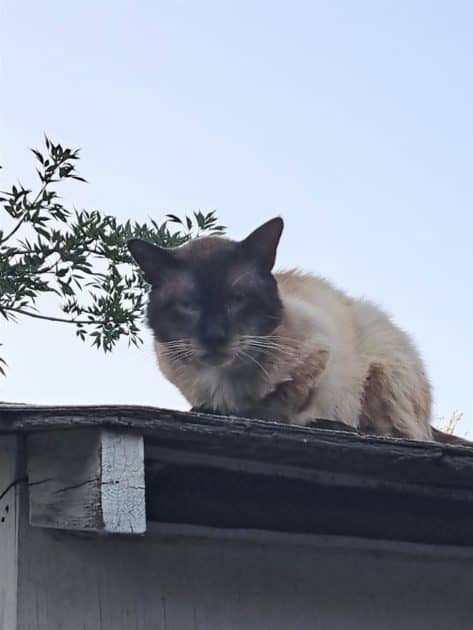This post may contain affiliate links. If a product or service is purchased using a link(s) in the post below a small commission may be earned.
Last updated on July 5th, 2024 at 11:50 am
Well, it’s summer and now that the weather is heating up I’d like to share a few tips on how to care for feral cats in your neighborhood.
Granted I know not everyone likes ferals or community cats but they need care too.I also know this is a year-round activity depending on where you may live. But when temperatures soar in the high 90s or 110 degrees (F) I worry about them.
Not all ferals like people. I get that but some might be a bit tamer. Or they become more socialized with some people.
Also, not all of these tips need to be super expensive. You can use old items you have at home or find cheaply at the secondhand, yard sale or even ask friends for them.
some simple tips
These tips are basic and don’t take much time.
provide water for them
Water is a basic need for any animal. You don’t have to give them a lot. You can use an old bowl or buy one cheaply somewhere. I would suggest checking ceramic bowls for lead (some have lead glazes). I also don’t recommend using metal bowls.
I learned this with Pal he never did like having a metal water bowl. I also found if you have hard water the bowl will end up with mineral build-up on it.
You can even use an old food storage container. Anything you can wash regularly.
place the water dish in a shady spot
No one likes drinking hot water so place it in a shady spot. You can also add ice cubes to it if it’s a hotter day.
Provide shade
Again no one likes getting sunburned or overheated. Neither do feral cats. You can provide them with shade in the garden with plants, an umbrella, or even create a cardboard box cover.
If you have patio furniture ferals may rest under there as well. If the cement or surface gets hot you can provide them with something to lay on. An old towel or even an old or cheap bath mat.
Most bath mats don’t need a lot of care. If you can still wash it (meaning the back anti-slip coating is coming off) then wash it. If not just shake it out and rinse with with some soap and water.
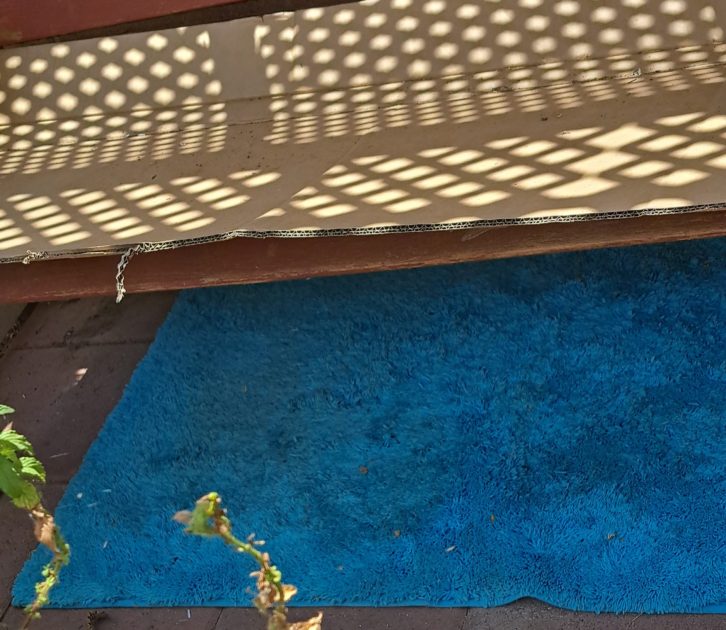
If you think a feral won’t rest on a mat you’re wrong. Ziggy can put that question to rest. FYI Ziggy isn’t a feral but his mom is.
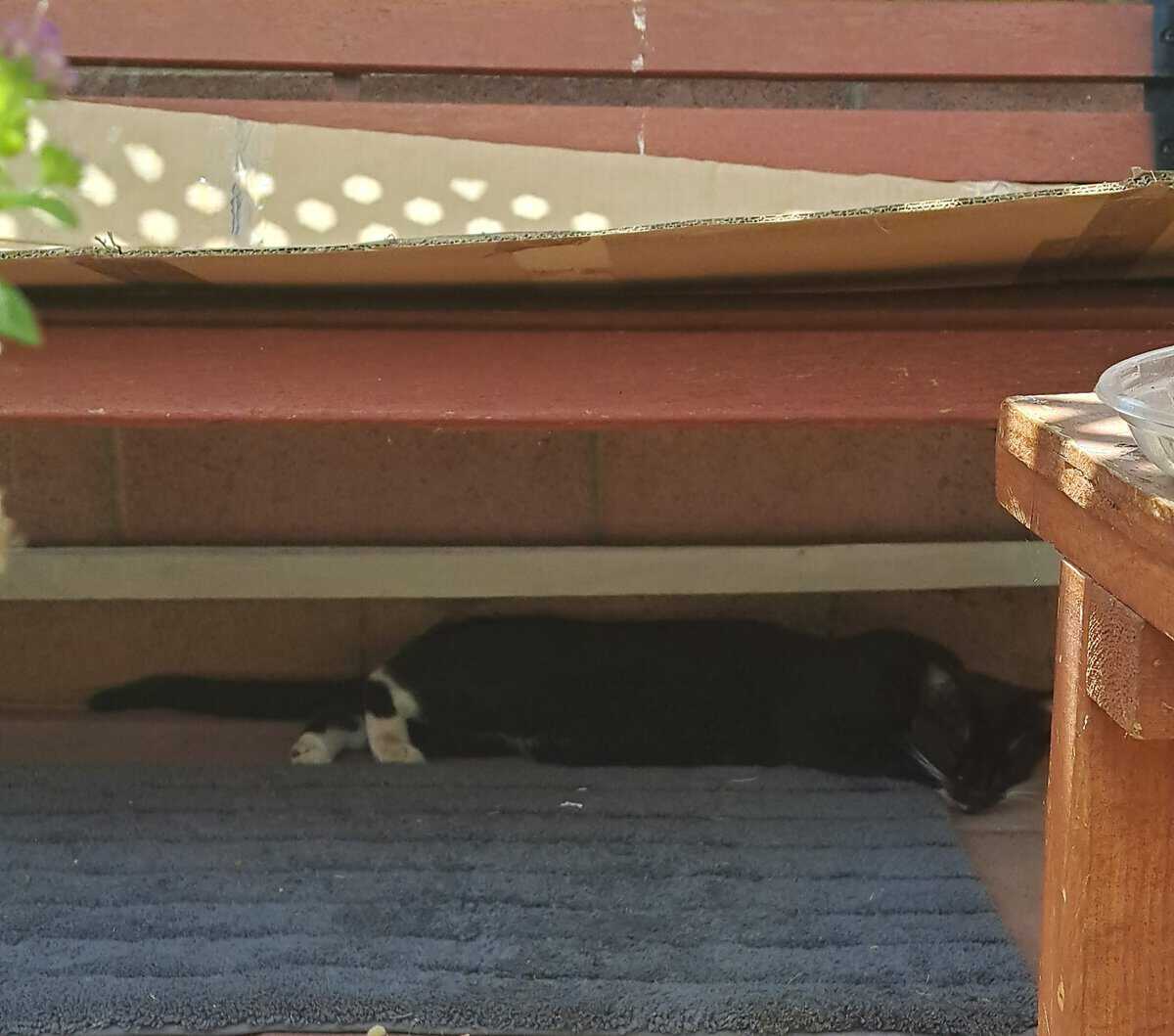
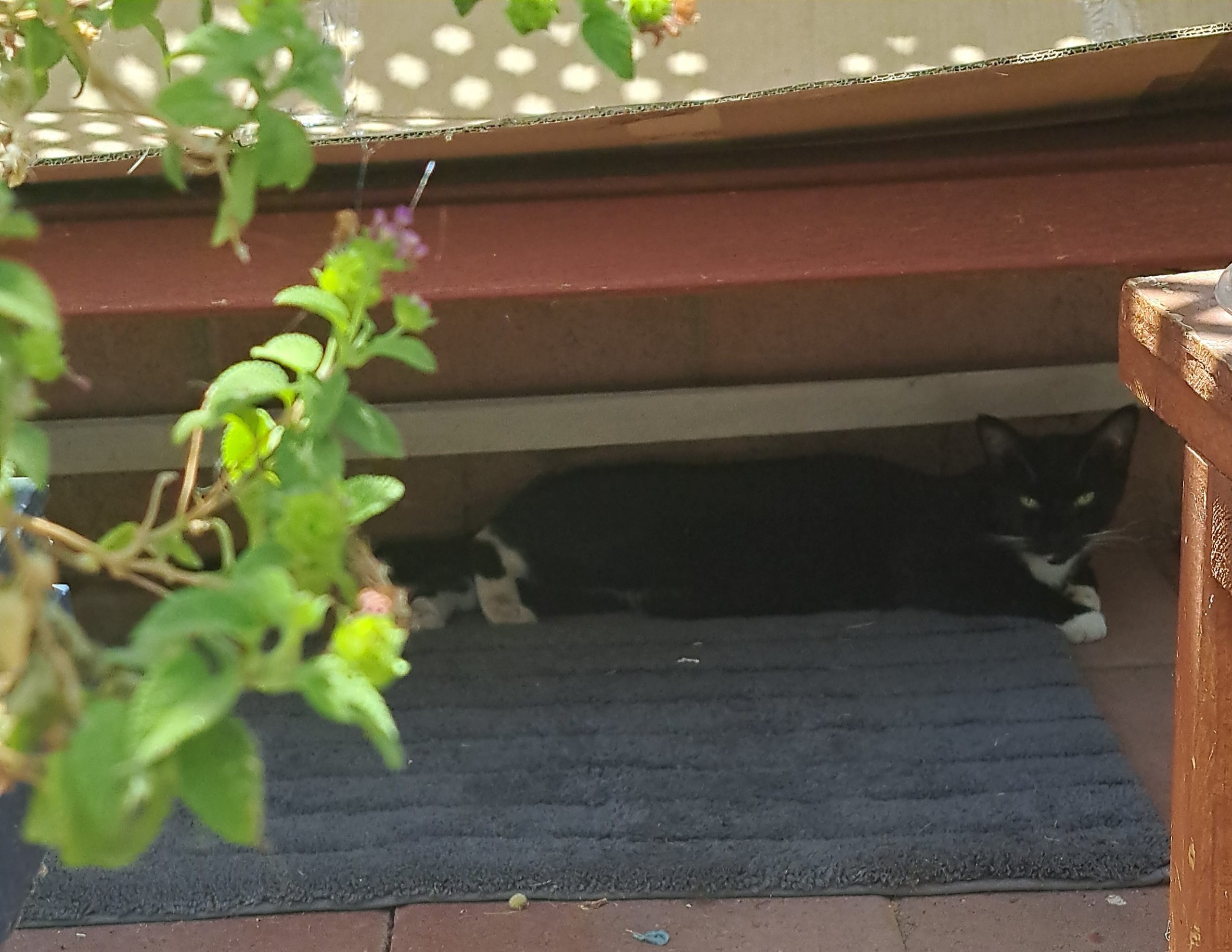
So as you can see Mr. Stardust enjoys his napping spot very much.
You can even put some cardboard down for them. Shadow loves his. Shadow isn’t a feral but his mom is.

How to make a cardboard box cover
What you’ll need:
[su_list icon=”icon: paw” indent=”1″]
- a cardboard box (preferably larger then the feral cat)
- bucket, planter, bricks (something to place the box on).
- rocks, bricks (something heavy to hold the cardboard in place)
[/su_list]
- Break down your box.
Remove the tape on the bottom and flatten it down. Or if it’s a longer box you can cut it length-wise. - Find your support.
- Place it in a space the feral cat likes.
- Place your cardboard on top and add the weights.
If you’d like to add a bit of camouflage for the feral cat you can always drape the box with an old towel or sheet.
Feeding is optional
I know not everyone likes cats or wants to take on the responsibility of one so I’ll add that feeding a feral is optional.
Not all Ferals are street smart
Not all ferals are very bright. I can attest to this truth because I own a few that make me wonder. Some ferals may have been abandoned by their owners or they may have gotten lost before they could have been microchipped.
you might make a new friend
You might make a new friend or even end up with a pet. I’ve had both happen. But I’ll get to that in a minute.
Not all feral cats are socialized and for some, it may take time to gain their trust. Others may just be open or grateful for the safe haven your yard provides.
This was the case with Pal’s friend Tigger. He would come to visit Pal and eat with him. Well, he ended up trusting us and we gained a new pet. He was around a year old when we took him in. He was always very grateful for his safe place. He did take time to tame in a sense but did become accustomed to coming inside the house and being petted and picked up.
He lived a good life and was Pal’s faithful companion until he passed in 2009.

Again this may not always be the case for all ferals. You may have to test out scenarios where they can venture into your house (if you choose) and let them explore a bit.
Some ferals live a long time
This is the exact case with TJ (my neighbor named him). I think this guy is probably between 10 to 12 years old. My neighbor thinks he might have been abandoned by his owners but we never knew his history. We did know he was socialized and loves treats.
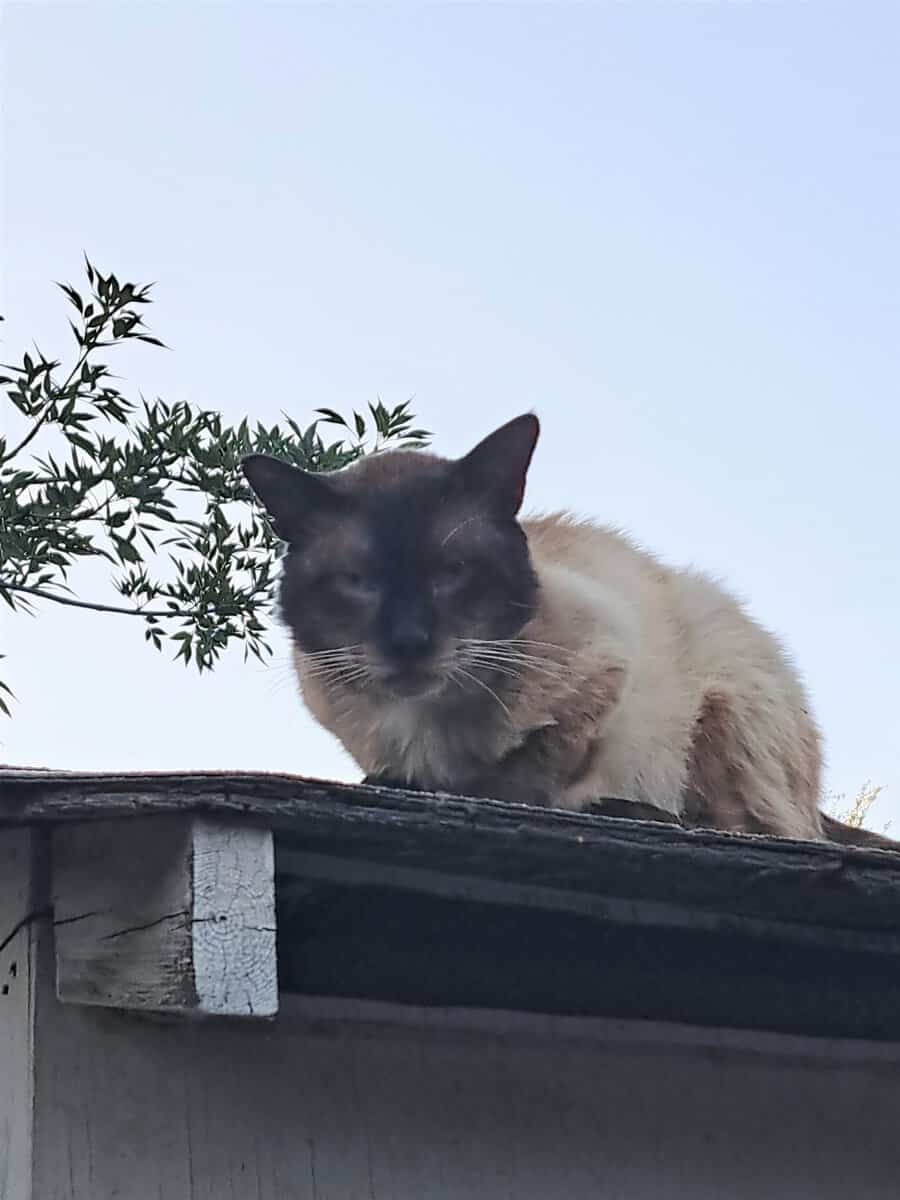
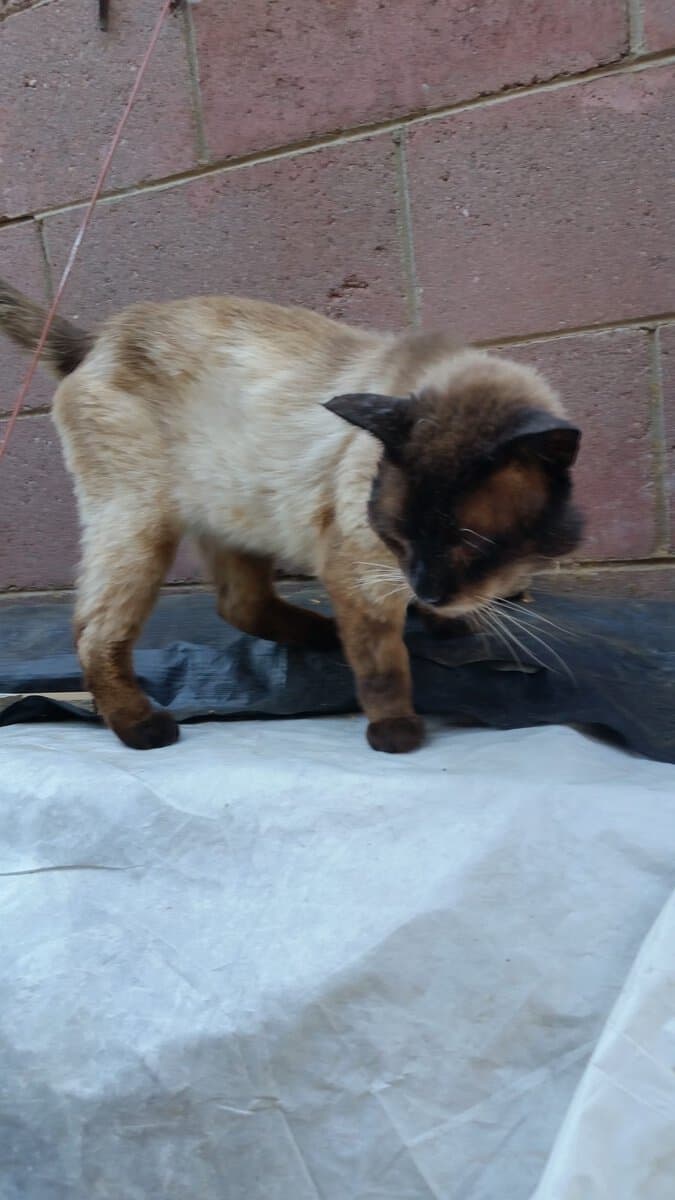
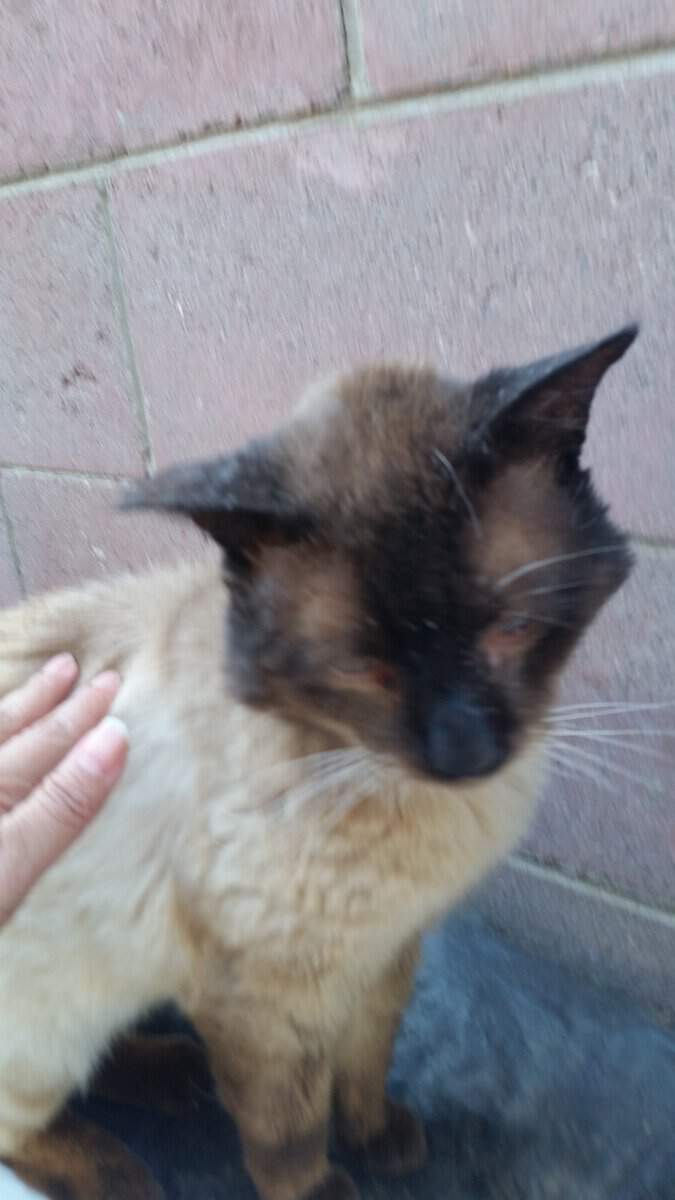
My neighbor started feeding him many years ago. He’s quite the Tom in our neighborhood.
He’s also got the battle scars to prove it. He’s missing teeth and at times has broken whiskers.
He’s fathered a few generations of kittens.
I own two. Teddy and the late Bowie. Teddy’s looking more and more like his dad every day.
Even with his advanced age, TJ is still chugging along. He’s fed and watered by my neighbor and me. Sometimes he comes to visit just for pets and attention. I’m hoping to catch him when the weather cools down so we can get him neutered. Then give him a home in his old age.
Be kind to animals
Providing some of the above-mentioned options are just being kind to animals. Even if you opt to trap the feral later on you gave them a chance to have a safe haven.
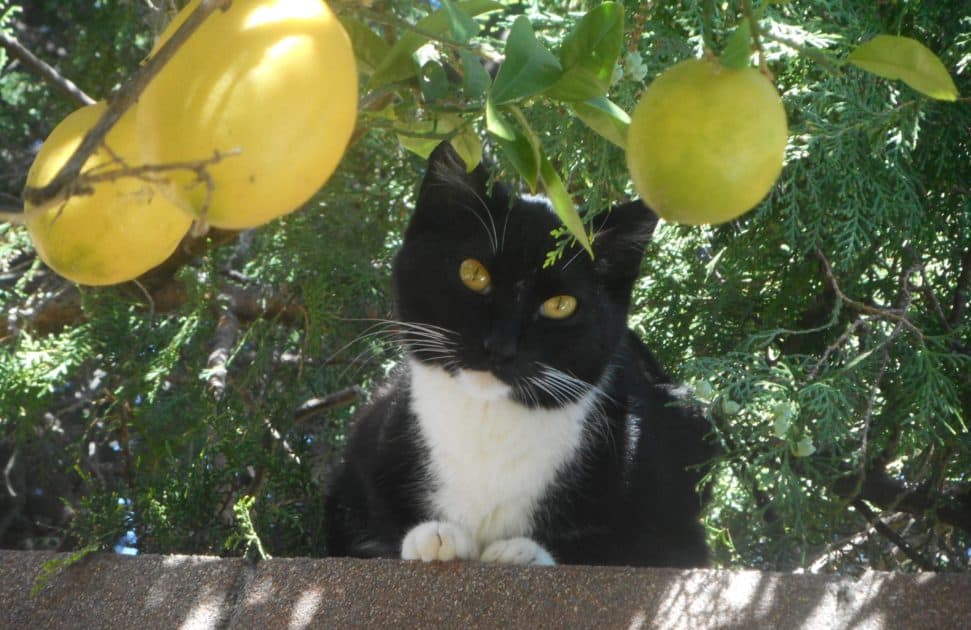
Boots under the lemon tree series
Boots is a feral cat who frequents my yard. She is black and white along with being very observant.
A three photo set of Boots resting under the lemon tree on our wall.


